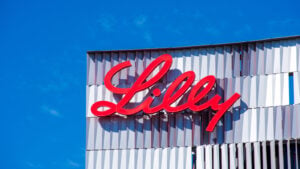With investors moving back towards a “risk-on” stance in recent months, you may think that risky stocks could lead to outsized rewards this year.
Yet while more favorable economic and market conditions could extend the current bull market (which started in October) well into 2024, an improving macro picture may not be enough for stocks that have large company-specific risks.
For instance, early-stage companies experiencing severe cash burn. Even if interest rates are moving lower, don’t expect a full-on return to the near-zero interest rate environment of 2020/2021.
This may limit the extent in which institutional investors are willing to continue supplying these companies with additional capital, or, if they do provide more capital, do so on terms very unfavorable to existing investors.
In addition, there are some more established, profitable entities that are facing risks that have little to do with factors like inflation and interest rates. Even if their respective share prices have dropped in response to negative news, don’t assume the full extent of such news has been fully priced-in.
The following seven risky stocks fit into either or both of these categories.
Boeing (BA)

Boeing (NYSE:BA) may not be what first comes to mind when you think of “speculative investment,” but chances are you know why shares in this aircraft manufacturer have become a risky stock in recent days.
Following a flight safety incident earlier this month, the Federal Aviation Administration (or FAA) grounded all domestic 739 Max 9 passenger jets. This incident has renewed concerns about the quality and safety of Boeing’s aircraft. This news of course has also had a negative impact on the price of BA stock, sending it down by double-digits.
However, if you are wondering whether this is a “buy the dip” situation, think again. The fallout from this incident may continue to affect BA’s performance. It’s also well worth noting that BA trades at a rich forward multiple (54.8 times earnings). Even if this issue is quickly resolved, upside potential may be limited.
Lucid Group (LCID)

Lucid Group (NASDAQ:LCID) isn’t the only early-stage EV maker that belongs in the risky stocks, and it’s certainly not the riskiest. Some smaller, more undercapitalized names, like Mullen Automotive (NASDAQ:MULN) are much riskier.
Still, despite having advantages over the other “EV also-rans,” like a deep-pocketed backer (Saudi Arabia’s Public Investment Fund, or PIF), there’s good reason why the LCID stock rout has intensified in recent weeks, with shares dropping 22.5% in the past two weeks alone.
As Louis Navellier and the InvestorPlace Research Staff argued on Jan. 3, Lucid has had to scale back production plans, and continues to experience weak demand for its vehicles. Further investment from PIF could help keep the lights on, but this will come at the cost of heavy shareholder dilution. LCID isn’t in the market’s car crusher, yet it’s definitely in the stock market junkyard, and it’s there to stay.
Eli Lilly (LLY)

Like Boeing, Eli Lilly (NYSE:LLY) is another name that may not come to mind when you think of high-risk stocks. Although the pharma giant isn’t facing the type of headwind Boeing is currently experiencing, the stock has become a situation where downside risk outweighs possible upside rewards.
Why? Chalk it up to the hope and hype surrounding its top drug candidate. This has resulted in a triple-digit rally for LLY stock since March, as investors respond positively to the initial and potential continued success of Mounjaro, a diabetes treatment that Eli Lilly also wants to market as an obesity treatment.
Yet with shares trading for 96.5 times last year’s earnings, 51.9 times this year’s estimated earnings, the financial impact of Mounjaro on LLY’s bottom line may already be accounted-for. At the same time, any stumble in expanding this drug’s label could drive a big reversal for shares.
Opendoor Technologies (OPEN)

A possible “Fed pivot” bodes well for the housing market, but that doesn’t mean Opendoor Technologies (NASDAQ:OPEN) has ceased to be one of the risky stocks. Shares in this iBuyer (aka large-scale house-flipper) have more-than-tripled off their 52-week lows. Largely, due to growing confidence that interest rates will soon head lower.
However, as a Seeking Alpha commentator recently pointed out, there are many flaws to the iBuyer business model. As you may remember, Opendoor wasn’t even profitable during the pandemic housing bubble. It’s hard to see results improving in what will likely be at best a recovering housing market rather than a new housing bubble.
Although OPEN stock has been dropping since the start of the year, it’s not too late to sell. The market could come to a similar downbeat conclusion about Opendoor’s business model. That would likely result in a more pronounced reversal for the stock.
Plug Power (PLUG)

The market’s “return to risk on” has done little to change sentiment for risky Plug Power (NASDAQ:PLUG). This once-popular “green hydrogen” play barely bounced back in November and December, after giving back the last of its gains from the renewable energy stock bubble.
Worse yet, further declines may lie ahead for PLUG stock. In a recent downgrade, Susequehanna’s Biju Perincheril argued that issues related to gross margins and the financing of Plug’s expansion of its “green hydrogen” production capacity aren’t going to be resolved anytime soon.
Add in other developments, such as the recently-released regulations on “green hydrogen” tax credits that may make benefiting from the tax credits difficult, and it’s clear that the bad news keeps piling up for Plug Power. For now, shares appear more likely to re-hit their lows (and perhaps hit new lows) rather than begin a comeback. Consider it best to stay away.
Cassava Sciences (SAVA)

As a clinical-stage biotech firm with just one major candidate in its pipeline, Cassava Sciences (NASDAQ:SAVA) fits well within the risky stocks category. For years, speculators have been dabbling in Cassava, which in theory could have big upside potential, if its simulfilam Alzheimer’s treatment ever makes it to market.
But while shares have moved higher in recent months, there are near-term and long-term risks with SAVA stock. In the past, Cassava has been dogged by allegations of scientific misconduct. The latest round of such allegations appear to have been put to rest. However, new allegations could arise, leading to more volatility for shares.
In the long-term, there is massive downside risk, in the event simulfilam fails to make it through the regulatory process. While the potential payoff from simulfilam making it to market remains very high, it may be best to wait for weakness before buying.
Upstart Holdings (UPST)

With 41.4% of its outstanding float sold short, Upstart Holdings (NASDAQ:UPST) is one of the market’s most-shorted stocks. While not for certain, a big reason for this may have to do with the current risk/return proposition with this provider of AI-powered loan underwriting technology.
Here’s what I mean in a nutshell. Even if inflation cools/interest rates move lower, and the economy improves, upside for UPST stock may not be high. Shares currently trade at a sky-high forward multiple (213.6 times earnings).
At the same time, if macroeconomic conditions worsen, not only could this mean big losses for both the company and shares. A further downturn may call into question the viability of Upstart’s tech-based alternative to traditional credit risk assessment methods. In short, UPST right now may be a “heads you break even, tails you lose big” situation, and not worth rolling the dice on.
On the date of publication, Thomas Niel did not hold (either directly or indirectly) any positions in the securities mentioned in this article. The opinions expressed in this article are those of the writer, subject to the InvestorPlace.com Publishing Guidelines.
